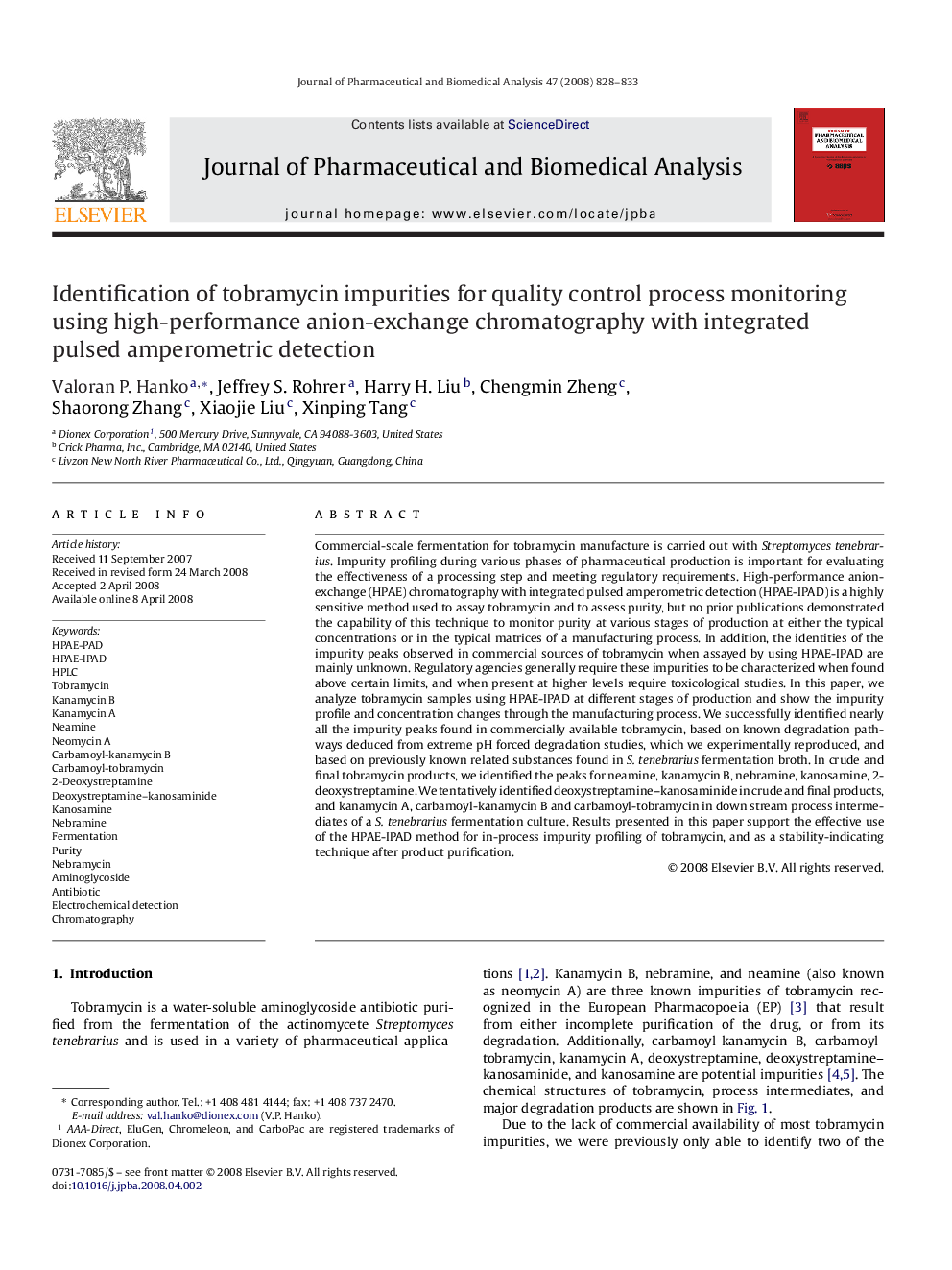| Article ID | Journal | Published Year | Pages | File Type |
|---|---|---|---|---|
| 1222992 | Journal of Pharmaceutical and Biomedical Analysis | 2008 | 6 Pages |
Commercial-scale fermentation for tobramycin manufacture is carried out with Streptomyces tenebrarius. Impurity profiling during various phases of pharmaceutical production is important for evaluating the effectiveness of a processing step and meeting regulatory requirements. High-performance anion-exchange (HPAE) chromatography with integrated pulsed amperometric detection (HPAE-IPAD) is a highly sensitive method used to assay tobramycin and to assess purity, but no prior publications demonstrated the capability of this technique to monitor purity at various stages of production at either the typical concentrations or in the typical matrices of a manufacturing process. In addition, the identities of the impurity peaks observed in commercial sources of tobramycin when assayed by using HPAE-IPAD are mainly unknown. Regulatory agencies generally require these impurities to be characterized when found above certain limits, and when present at higher levels require toxicological studies. In this paper, we analyze tobramycin samples using HPAE-IPAD at different stages of production and show the impurity profile and concentration changes through the manufacturing process. We successfully identified nearly all the impurity peaks found in commercially available tobramycin, based on known degradation pathways deduced from extreme pH forced degradation studies, which we experimentally reproduced, and based on previously known related substances found in S. tenebrarius fermentation broth. In crude and final tobramycin products, we identified the peaks for neamine, kanamycin B, nebramine, kanosamine, 2-deoxystreptamine. We tentatively identified deoxystreptamine–kanosaminide in crude and final products, and kanamycin A, carbamoyl-kanamycin B and carbamoyl-tobramycin in down stream process intermediates of a S. tenebrarius fermentation culture. Results presented in this paper support the effective use of the HPAE-IPAD method for in-process impurity profiling of tobramycin, and as a stability-indicating technique after product purification.
